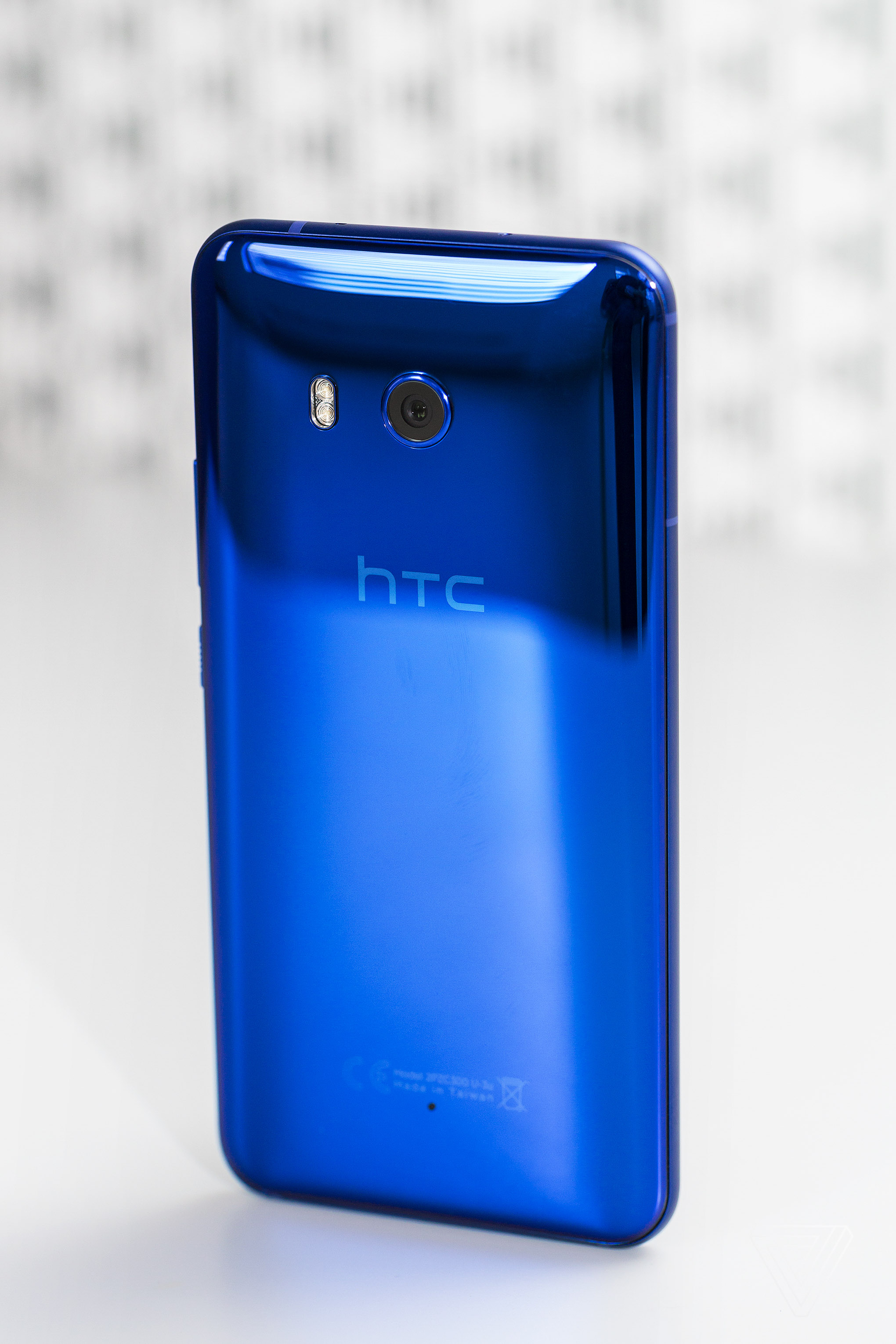HTC wants you to squeeze its new phone
…
HTC is announcing its newest smartphone today, the U11 flagship. The U11 is the successor to last year’s HTC 10, and has a 5.5-inch, Quad HD display, Snapdragon 835 processor, and new glass and metal design. HTC is also introducing a new way to interact with the U11 by letting you squeeze the sides of the device to perform different functions.
This new feature is called “Edge Sense”, and it can be configured to do a variety of tasks with either short or long squeezes. You can set a short squeeze to open the camera and then take a picture when the camera app is open. A long squeeze can be configured to launch the Google voice assistant or toggle the flashlight on and off.

Squeezing your phone to do things that you’re used to using a touchscreen for is an odd experience, and HTC is starting out slowly with this implementation. Nigel Newby-House, the vice president of product planning for HTC America, says that the company hopes to introduce people to this new experience with the U11 and it will expand the Edge Sense features in the future once we’re all used to gorilla gripping the sides of our phones to do things.
The experience of squeezing the phone is a little unsettling at first and definitely takes some getting used to. The phone doesn’t actually flex when you do this — the metal sides have pressure sensors just below the volume and power keys — but there is an on-screen cue when you’re activating the feature. It’s designed to make it easier to do basic tasks single-handedly, and given the U11’s expanded display dimensions, any assistance when using the phone with one hand is appreciated.
In addition to Edge Sense, the U11 has a similar design to the U Ultra from earlier this year. That means it’s metal and glass — a departure from the all-aluminum unibody designs of past HTC phones — with curved panels that blend into the metal frame and vibrant, pearlescent colors. The U11 is refined compared to the U Ultra — its camera bump is much smaller and the contours of the device are smoothed out and more pleasing to the eye — but this is very much cut from the same cloth (or glass, if you will) as its larger sibling.

That also means it lacks a 3.5mm headphone jack, instead relying on its USB Type-C port for charging, data transfer, and audio function. HTC says removing the headphone jack has a number of advantages, including allowing the company more room inside the phone for other components and making the design of the bottom edge smoother. It also allows for a better audio experience, as the included headphones have both audio tuning and active noise cancellation, without having to rely on a secondary battery. In addition to the headphones, HTC is including a USB-C to 3.5mm adapter for use with other headphones, which it didn’t for the U Ultra.

The rest of the U11’s spec sheet reads like any other you’d expect for a high-end Android smartphone in mid-2017. It has Qualcomm’s latest processor, 4GB of RAM, 64GB of storage with support for microSD cards (a version with 6GB of RAM and 128GB of storage will be available in select markets, but not the US), a 12-megapixel camera with optical stabilization and dual-pixel autofocus, and a 3,000mAh battery. The U11 is also rated for IP67 water and dust resistance.
The U11 comes with not one, but three different intelligent assistants. In addition to the Google Assistant that comes with Android, it also has HTC’s Sense Companion and support for Amazon’s Alexa assistant. The U11 is the first smartphone to have full hands-free support for Alexa, so you can say a voice command without having to first open an app or even unlock the phone. There are four microphones that assist with this function, and the phone can be set to wake up to “Alexa” or “Ok Google” at the same time.
HTC is partnering with Sprint in the US as the exclusive carrier partner for the U11, and it is available for preorder now and will be hitting stores on June 9th. Pricing is on-par with other flagship smartphones, at $29 per month for 24 months ($696 total). Those that preorder the phone will get two Amazon Echo Dots for free. An unlocked version compatible with AT&T, T-Mobile, and Verizon is also available for preorder from htc.com and Amazon for $649 and will be shipping in June.

Where other phone makers are experimenting with new screen shapes, multiple cameras, or other unique features, HTC is largely staying conservative with the U11. The squeezable feature is novel, but it’s hard to see how it will be game changing, and HTC’s shift to glass designs mostly just brings it up to speed with what its peers in the Android world were already doing. But much like the HTC 10 from last year, the U11 will likely be a solid device that gets the fundamentals right, and if that’s what you want from a smartphone, it could be a compelling choice. We’ll know more once we’re able to do a proper review of the phone when it’s available.
